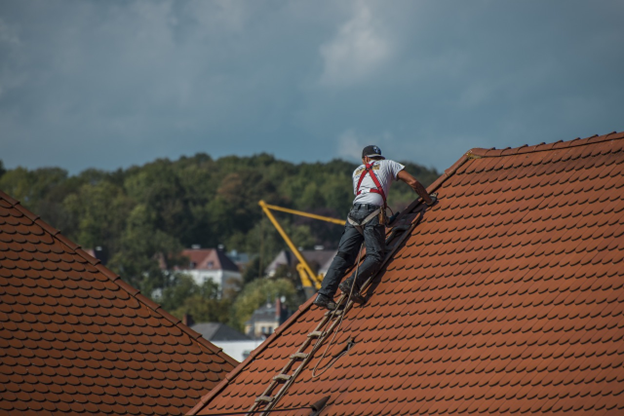When it comes to safeguarding your home, preventative roof maintenance is essential. By taking proactive steps to care for your roof, you can avoid costly repairs and unexpected leaks. In this blog post, you’ll discover practical tips and techniques to help you extend the life of your roof, ensuring your home remains protected and comfortable for years to come.
Conduct Inspections
Regular inspections are crucial for maintaining the integrity of your roof, as they help identify potential issues before they escalate into significant problems. These checks allow homeowners to detect signs of wear and tear, such as missing shingles, leaks, or water stains, which can lead to extensive damage if left unaddressed.
To conduct an effective inspection, start by examining your roof from the ground using binoculars, looking for any visible damage or debris. If it’s safe, you can also access the roof to inspect it closely, checking for loose or damaged shingles, clogged gutters, and signs of sagging. White Rose City homeowners also like to hire a company performing roof maintenance in York to conduct professional inspections. This ensures that any potential issues are caught early on and addressed promptly.
Clean Gutters and Downspouts
Clogged gutters and downspouts can lead to significant roof leaks and accelerated wear and tear. When debris accumulates, water cannot flow freely away from the roof, causing it to pool at the edges. This standing water can seep under shingles, leading to leaks within your home and promoting the growth of mold and mildew. Moreover, the excess weight from clogged gutters can strain the roof structure, increasing the risk of sagging or even collapse.
To clean gutters and downspouts, start by ensuring safety — use a sturdy ladder and consider wearing gloves. Remove leaves, twigs, and other debris by hand or with a scoop. Flush the gutters with water from a hose to ensure proper drainage, checking for any blockages in the downspouts. If blockages persist, you may need to use a plumber’s snake or a high-pressure nozzle to clear them out. Regular cleaning, ideally twice a year, will help maintain optimal roof performance.
Address Issues Promptly
Just like with any other part of the house, there are some issues you simply mustn’t ignore when it comes to your roof. These are the following:
- Active leaks
- Missing or damaged shingles
- Sagging roof sections
- Damaged flashing
- Clogged gutters leading to water backup
- Water stains on ceilings or walls
- Moss or algae growth
- Ice dams
Delaying repairs can lead to worsening conditions, such as water leaks infiltrating your home or structural damage escalating. By acting quickly, homeowners can maintain the roof’s integrity, ensuring long-lasting protection for their property.
Trim Overhanging Branches
During storms or high winds, these branches may scrape against the roofing material, leading to scratches and potential damage to shingles. Further, falling branches can create dents or punctures, allowing water to seep through and cause leaks. Moreover, branches can trap moisture and debris on the roof’s surface, promoting the growth of moss and algae, which can deteriorate the roofing materials over time.
To prevent these issues, regularly trim back any overhanging branches at least 10 to 15 feet from the roofline. Use pruning shears or a chainsaw for larger branches, ensuring to cut at a proper angle to promote healing and reduce the risk of disease spreading to the tree.
Ensure Attic Ventilation
When an attic lacks adequate airflow, heat builds up, causing shingles to overheat and become brittle. This brittleness can lead to cracks and ultimately contribute to leaks. Plus, excessive moisture accumulation can create a humid environment conducive to mold growth, further damaging roofing materials.
To improve attic ventilation, ensure that there are sufficient vents installed, such as ridge vents, soffit vents, or gable vents, to promote a continuous airflow cycle. Installing a powered attic ventilator may also aid in managing heat levels. Regularly inspecting and clearing any obstructions from these vents will keep your attic well-ventilated and safeguard your roof’s integrity.
Check and Maintain Flashing
Flashing is the thin metal material installed around roof penetrations, such as chimneys, skylights, and vent pipes, to prevent water from seeping underneath shingles. When flashing is damaged — whether through corrosion, improper installation, or displacement — it can create gaps where water can infiltrate. This infiltration can lead to leaks, resulting in interior water damage, mildew, and accelerated wear on roofing materials.
To maintain flashing, regularly inspect it for signs of rust, cracking, or separation from the roof. Ensure that it is securely fastened and that caulking or sealants are intact and well-applied. If any issues are detected, promptly repair or replace the flashing to prevent water damage and maintain the overall integrity of your roofing system. Regular checks can extend the lifespan of both the flashing and the roof itself.

In conclusion, prioritizing preventative roof maintenance is vital for protecting your home from costly damages. By conducting regular inspections, cleaning gutters, promptly addressing issues, and ensuring adequate ventilation, you can extend the life of your roof. Stay proactive in your efforts, and your home will remain a safe and comfortable haven for years to come.

